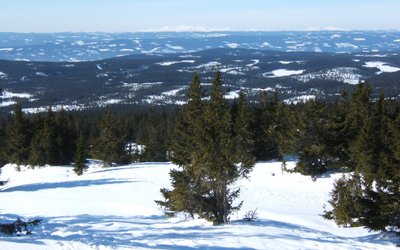Blanket peat erosion across Great Britain under climate change
February 15, 2016

The British Isles hosts around 10 % of global blanket peatlands. Blanket peatlands often occur on sloping terrain, which makes them highly susceptible to erosion if surface vegetation becomes damaged. There are around 3500 km2 of eroded blanket peat in the British Isles. Peat erosion impacts water quality leading to high turbidity and heavy metal pollution, disturbed river ecology, sedimentation of reservoirs, and loss of carbon. There is therefore a large amount of investment aimed at reducing erosion losses from blanket peatlands.
Blanket peat erosion not only results from human action, climate also affects the stability of the peat and associated erosion. The water balance and temperature regime drives the balance between peatland growth and decay. How climate change may affect blanket peat erosion across Great Britain remains unclear, however. A study has shown that the response of blanket peat erosion to climate change during this century will be highly variable in space. Both the relative peat erosion change and absolute erosion risk were predicted to be generally greater in southern and eastern areas than in western and northern parts of Great Britain.
Source: Li et al., 2016. Climatic Change 134: 177–191.
Photo: Natural England (www.flickr.com)








